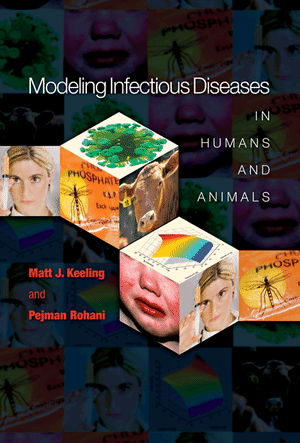|
All the models considered thus far
have been deterministic. This means they are essentially fixed
“clockwork” systems; given the same starting conditions, exactly the
same trajectory is always observed. Such a Newtonian view of the world
does not apply to the dynamics of real pathogens. If it were possible
to “re-run” a real-world epidemic, we would not expect to observe
exactly the same people becoming infected at exactly the same times.
Clearly, there is an important element of chance. Stochastic models are
concerned with approximating or mimicking this random or probabilistic
element. In general, the role played by chance will be most important
whenever the number of infectious individuals is relatively small,
which can be when the population size is small, when an infectious
disease has just invaded, when control measures are successfully
applied, or during the trough phase of an epidemic cycle. In such
circumstances, it is especially important that stochasticity is taken
into account and incorporated into models.
This chapter details three distinct methods of approximating the chance
element in disease transmission and recovery: (1) introducing chance
directly into the population variables, (2) by random parameter
variation, and (3) individual-level, explicit modeling of the random
events (Bartlett 1957). This third method is generally the most popular
and will be the predominant focus of this chapter, illustrated by
examples from the recent literature. All these examples have two
elements in common. First, they predict different outcomes from the
same initial conditions and, as such, multiple simulations are required
to determine the expected range of behavior. Second, they all require
the use of a random number-generating routine -- this can be thought of
as a rather clever computational trick that can deliver an apparently
random sequence of numbers in some prescribed range. (In the C++
programs we utilise a built-in random number generator, whereas for the
Fortran programs a simple routine is used)
Programs:
Program 6.1
|
Page
194
|
SIR
model with Constant additive noise
|
Program 6.2
|
Page 197
|
SIR
model with Scaled additive noise
|
Program 6.3
|
Page 202
|
SIS
model with demographic stochasticity
|
Program 6.4
|
Page 203
|
SIR
model with demographic stochasticity
|
Program 6.5
|
Page 204
|
SIR
model with tau leap method
|
Program 6.6
|
Page 210
|
SIR
model with two types of imports
|
|


